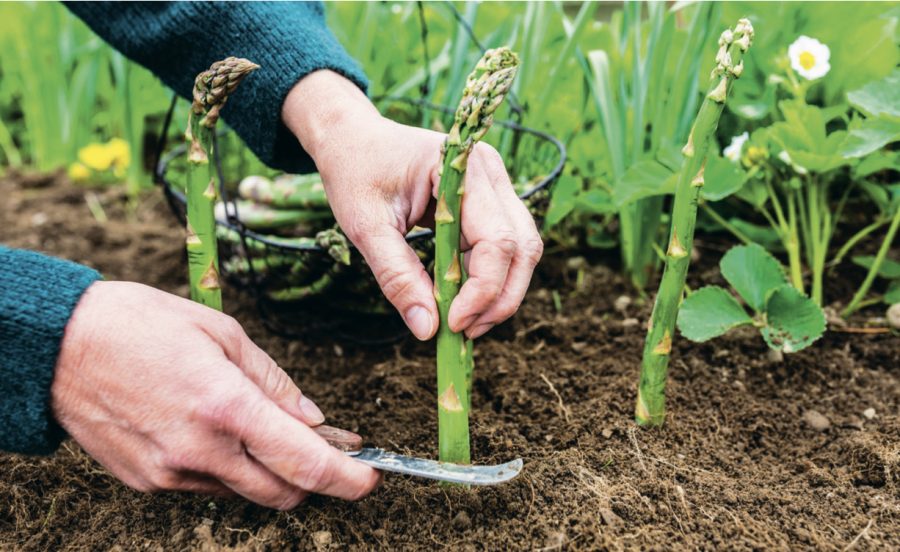Lee Senior has some surprising facts about this delicious plant that you can grow in your veg patch.
Asparagus is unquestionably a springtime delicacy. The succulent young, tasty spears harvested between April and June are simply packed with flavour. There are health benefits too. To have something so delicious and nutritious at this time of year, when main season crops are in short supply is a real boon. There is very little else that can be reliably harvested outdoors in April and May, during the so-called ‘hungry gap’. The really good news is that well-cared for plants can crop for up to 20 years.
A surprising number of amateur vegetable gardeners are put off from growing asparagus due to the apparently testing conditions they require. This is a great pity as asparagus is actually relatively straightforward.
Although I grow it to eat, asparagus can be expensive to buy in the shops. Therefore, longer term it is a very cost effective crop to grow.
Asparagus can be grown from crowns or from seed or both. Each method has pros and cons. Plants can be male or female but males produce far better yields and a greater number of spears. Accordingly, many crowns are male F1 hybrids these days.
A LONG TERM INVESTMENT
Asparagus is a permanent, perennial, long term crop. This is a good thing but on rented land such as an allotment, it does also need some consideration. Do consider your long term plans before embarking on the wonderful asparagus journey.
If your land is on a short term lease, rented on a temporary basis, or you indeed plan to move within the next few years, do think carefully. You are not going to see much in the way of crop yield for the first two-three years if you are starting from scratch. Established asparagus plants can of course be dug up and transplanted. However, mature plants don’t like root disturbance, so it is far from certain whether they will adapt to their new home. I have had very limited success moving mature plants and suffered a number of losses along the way.
The fact that you have to wait three years for your first decent crop, can put people off. That and also the price of buying the crowns in the first place, which always looks expensive when compared with typical vegetable seeds.
SEED OR CROWNS?
Once you’ve made the exciting decision to start growing asparagus you’ll need to consider whether you are going to buy crowns or grow your plants from seed.
I’ve done both over the years, but your decision depends on a number of factors unique to you.
Crowns are basically dormant one year old roots. Gentle cropping can take place after three years, then I would wait until the fourth year for full cropping.
Seed grown plants should only really be cropped in their third year, but they are considerably cheaper and more cost effective especially if you want a lot of plants.
Either way, the wait can be frustrating and it can feel like forever, but it’s the bigger picture we are looking at. Crowns can save you a year on cropping time. Whether the time saved is worth the extra cost is your main decision along with how many plants you ultimately want.
If you want just ten or so plants and you want to save a year’s waiting, crowns are very tempting. They also don’t need valuable greenhouse space in spring as they should be planted out directly. I started out on my own asparagus adventure with crowns and I have no complaints, losing just one plant.
This article extract was taken from the April 2024 edition of The Country Smallholder. To read the article in full, you can buy the issue here.
To receive regular copies of The Country Smallholder magazine featuring more articles like this, subscribe here.
For FREE updates from the world of smallholding, sign up for The Country Smallholder newsletter here.








